Kurosawa on Villains

We were talking last week about how the villain never changes.

Akira Kurosawa, director of “Seven Samurai,” “Rashomon,” and many other classics
The hero does.
But never the Bad Guy.
Here’s Lawrence Kasdan (Body Heat, The Big Chill, The Accidental Tourist, not to mention Raiders of the Lost Ark, Return of the Jedi, etc.) quoted in a 1991 article in the L.A. Times:
“(Akira) Kurosawa, the greatest director who ever lived, said that villains have arrived at what they’re going to be . . . that’s their flaw, but that heroes evolve–they’re open to change and growth.”
Kasdan in this context was referring to his own aspirations as a moviemaker. He hoped, he said, to be a hero in his own career, by which he meant he intended to keep evolving as a writer and director, to never settle for doing something he had done before.
But let’s consider Kurosawa’s observation in its own right—as a principle of storytelling relating to antagonists.
Certainly the brigands in Seven Samurai don’t change.
The villain in Rashomon is humanity’s craven need to present itself in a positive light, even if it must perjure itself shamelessly to achieve this. That surely doesn’t change.
But Kurosawa gives the villain credit for possibly evolving into his or her state of stasis.
The villain has arrived at who he or she is going to be … that’s the villain’s flaw.
Kurosawa is augmenting our original statement
The villain doesn’t change
by declaring first, that
The villain has changed in the past but has now reached a state from which he or she no longer can or wishes to evolve
and further that
This state of completion/stasis/self-satisfaction is the villain’s weakness.
This is great grist for you and me as writers.
Let’s take the first part first.
Has the villain evolved prior to our meeting him or her in the narrative?
J.R.R. Tolkien may have thought so.
Nothing is evil in the beginning [says Elrond in The Lord of the Rings]. Even Sauron was not so.
I’m not sure if I believe this.
The character of “Dick Cheney” in Vice has certainly changed from his early Wyoming days. Or has he? Was he always who he was, though it took the passage of time to reveal this?
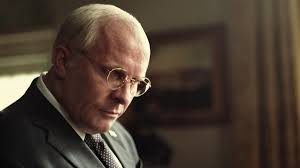
Christian Bale as Dick Cheney in “Vice”
Did Darth Vader evolve?
How about Hannibal Lecter?
Gordon Gekko?
Has the Terminator evolved?
The Alien?
The Predator?
I’m not sure it particularly matters.
The point for you and me as writers (and Kurosawa agrees) is that our villain cannot and does not evolve from the point when we meet him in the story.
Medea was a lover and valiant helpmeet to Jason before he abandoned her.
Clytemnestra was Agamemnon’s caring wife before he sacrificed their daughter Iphigenia.
Even Scrooge McDuck may have been a good guy at one time.
But by the time we meet them onstage or in the movies, these villains are bad to the bone.
Heroes evolve [says Kurosawa, cited by Kasdan]. They’re open to change and growth.
Villains aren’t.
Bad Guys do not change.
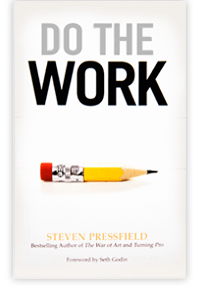
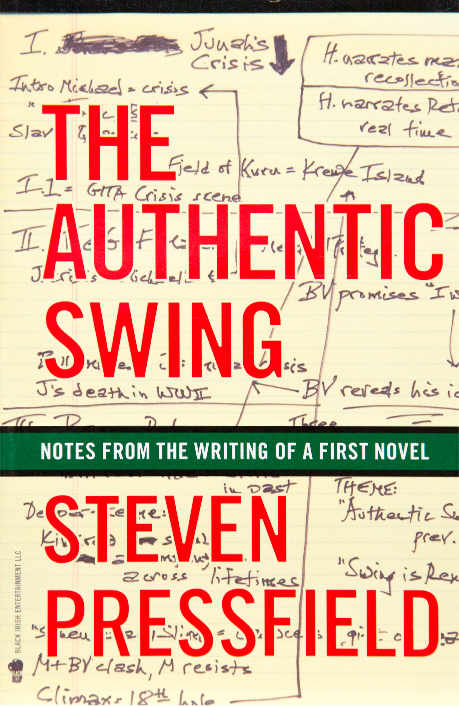
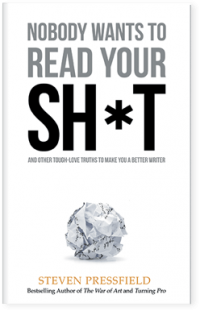
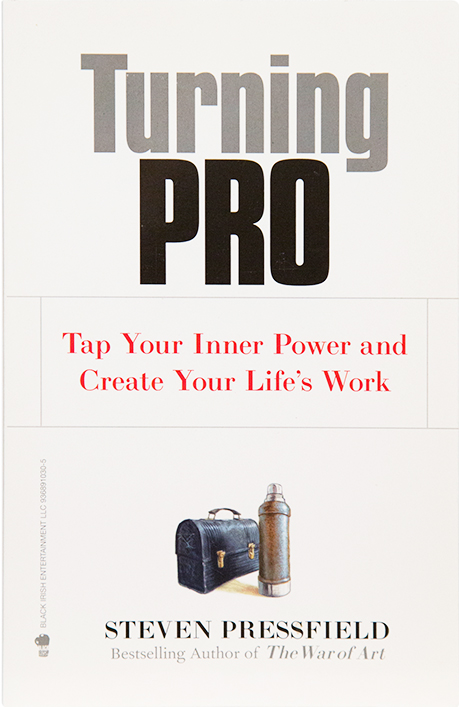
This is one of those obvious things that is so hard to see. I will always be grateful you brought it to our attention, Steven!
“Did Darth Vader evolve?”
Yes!
He turned against the Emperor at the end of ‘Return of the Jedi’ and died in the act of saving Luke. In the last scene, his spirit is next to Obi-Wan and Yoda as part of a protective trio.
This actually annoyed me, because it seemed too contrived an attempt to redeem the villain. Your point still stands, but Vader isn’t a good example.
Tom
The fact that it actually annoyed you as a contrived attempt to redeem the villain may actually even prove the point in a stronger way. If we manage to create a villain that is believable and then change them to increase empathy, it will feel contrived. If instead the villain’s downfall is a result of a fatal flaw that fits neatly into the narrative then we might not question it and empathy for the villain could still be achieved.
bob
And… he was no longer the villain. He became Anikin, the hero of the first movies. The Emperor, our true villain from episode 1 tried to kill him, staying the same. At least meesa meesa thinksa soo.
And, I think, if a villain changes, they usually are no longer the villain.
Vader, when we are first introduced, is an unchanging menace. But with the writers’ choice to redeem him (help him not be a villain), they allow him to change at his morning if death. He changes from villain to father.
The Terminator is an unchanging monster. Until he changes in the later films to become hero. The trend today in film is to blend the villain with hero. These are the dark knights, the villainous heroes. Thus we see them change in today’s art.
However, whenever you find a pure villain, they remain unchanged.
Maybe we could also say that the villain in ourselves never changes – the part
that isn’t willing to change and thinks we’re right no matter what, or is in
despair no matter what. The hero in US is open to change and can vanquish
the other part. Just what came to me.
I live this observation!
WOW. Brilliant.
So true. Great post. I agree that villain’s are stuck and don’t change. But I think they may have moments where they try to change and fail. Those moments deepen their character and make them more dimensional. The SS Officer Amon Goeth (played by Ralph Fiennes) in Schindler’s List is a great example. My favorite scene in the whole movie was when for a short time Goeth tried not to kill the concentration camp prisoners. Schindler suggested that he would wield more power and authority if he didn’t constantly kill. Goeth tried to control his violent urge, and as the viewer I hoped he would find a spark of goodness, buried somewhere deep within, but his attempt was fleeting. Even so, because of that failed attempt, I got a better glimpse of the darkness that made Goeth the villain that he was. The conflict between good and evil was magnified through that scene.
But is the ‘opponent’ or antagonist always a ‘villain’?
‘Every villain is a hero of his or her own story’ wrote Christopher Vogler in “The Writer’s Journey”.
When I think of the word, ‘villain’ I think of the words ‘calcification’, ‘extremist,’ ‘stagnation’. The concept of a villain as laid out by Pressfield and Kurosawa goes against nature. Nature is in a state of constant flux, of building up and tearing down. A villain can live on either end of that spectrum. Think of the chaotic villains who are out to destroy everything the hero has built. Villains like Sauron who want to rule over destruction and waste. There are also villains who build a structure that is not to be changed, like Big Brother in 1984. Both types are extremists who want only one way forever. The hero represents the constant change in nature, the building and tearing down depending on which extreme they confront. The whole ideal of “The Virgin’s Promise” is change itself.
That is why a villain automatically loses status as a villain if he or she or it changes. The villain no longer holds out against nature. It’s also how a hero becomes a villain. If a hero calcifies in place once the goal is achieved, the hero defaults to villain.
Of course you could argue that the points of extremity also exist within nature, making them natural. Without stagnation, there is no change to go against it.
Isn’t it limiting to say your villain can never evolve? I feel uncomfortable with rules as strict as this in my writing. If I want my villain to evolve, why can’t he/she? The Darth Vader example is a good one – it annoyed me as well when he suddenly became a good guy, but that was because it was clumsily done, at the end of a deeply flawed film. Done better, it might have been effective or even moving.
I don’t want to write by numbers, or follow a set formula.
I could be wrong, but I’ll go back to a previous post from Steven about Hal Slocomb in Thelma & Louise. I agree with one of the previous posters that Darth Vader is not the villain, but the Emperor is. I think that would make Vader closer to Slocomb, and more of a plot device/distraction, than the actual villain (Empreror). The Emperor is the one trying to control all of the outcomes through the Dark Side of “the force”, while Vader is his consigliere (sp?). I do need to go and re-watch T&L now! LOL
If bad guys don’t change it wouldn’t be possible to go from bad to worse. And why wouldn’t they if they encountered an effective protagonist. So the learning point in this piece is bad guys don’t change for the better and still be credible bad guys.
There are successful stories in which characters change from good to bad and back again. However, these stories emphasize character over plot. Many of Saul Bellow’s books are like this. The characters of my favorite from the 19th century, Anthony Trollope, are never unambiguously good or bad.
Steven is right if you are writing plot-driven narratives, but there are many readers for whom plot is not the most important element of a story.
Librarians, when helping readers find their next book to read, assess whether a person reads for plot, character, setting, or language. Librarian lore says plot is most common preference, language the least, but most readers like some combination of the four aspects. A skilled librarian assesses the mix the reader prefers and then recommends books that match the mix. They teach this at library schools.
An advantage to writing books over making movies is the way books are distributed. Books are sold to individuals. A book doesn’t need broad theater packing appeal to succeed. Consequently, books can appeal to more specialized audiences. That’s not to say the broadest appeal is bad, it is just not as determinative for books.
I’m not sure if this counts, but didn’t Apollo Creed change? Not sure if he would be considered a villain though.
What about those stories that have no true villain and work just fine?
Take Watchmen. The fact that there are no true heros, and even more the fact that there is no true villain makes it my all-time-favourite super hero movie. Ozymandias may commit mass murder, but has good intentions. And even succeeds in uniting mankind. You might not agree with his methods, but his intentions are pure nontheless. From a certain point of view he might even be regarded as the hero in disguise. Ironically he is the only one who reveals his identity.
Or take Martins Song of Ice and Fire. There are no villains, only authentic characters with agendas. And all of them change over the course of the story. Might it be that the whole concept of the villain has become obsolete?
Some great commentary and thoughts in this string. I’d echo some of them. Anton Chigurh is a compelling villain. Cold and single-minded, but with his own code, he’s the same character when he was being put into the back of a sheriff’s car in the opening scene as he was in the penultimate scene where he’s limping away down a broken sidewalk. As a villain, no change in his character. (Both scenes, btw, he’s walking or being walked away from a stolen car, if that gives you an “In & Out”).
Kylo Ren is almost more interesting as a villain because there’s a possibility he MIGHT change. He struggles as he reaches toward the light, but ultimately murders Solo, his father. And with Rey, he fights back-to-back against a common enemy. There’s a chance he may turn away from the dark, but is pulled back in. (Which makes me think of Michael Corleone: https://youtu.be/UPw-3e_pzqU). At the end of the story, Kylo Ren the same villain. Maybe even more so, as he had the opportunity to change, but rejected it.
Always enjoy reading what people have to say on these posts.
Here, I think, is one exception to the rule: Pasha, in Dr. Zhivago (played, in the movie, by Tom Courtney). When we first meet him in the film, he a young, sweet-hearted, idealistic, somewhat love-struck student with egalitarian political hopes and dreams — a sort of early 20th century Russian social justice warrior. He’s persecuted and eventually taken away by the Tsar’s secret police… When we meet him again, he has undergone full evil metamorphosis, becoming a cold, cruel, heartless, sadistic Bolshevik bastard. As he exits the story, one gets the impression that Pasha, as per Steven’s premise, won’t be returning to his goody-two-shoes any time soon.
Now, Pasha is not THE villain of the story, but he’s a villain who started out good and decent but evolved into someone loathsome and dreadful. And we watched it happen through the provocations he experienced both on screen and off.
Got it! A point I would have missed without your insight. Thank you, sir.
The Terminator in the original film, was the bad guy. While in the second, and subsequent films, he was the goodish guy! Yes he was reprogrammed, but please explain? The bad guy never changes, only the hero?
Who says Scrooge McDuck was/is a villain?! I mean, come on!! What? No answer? I thought as much…hmphh